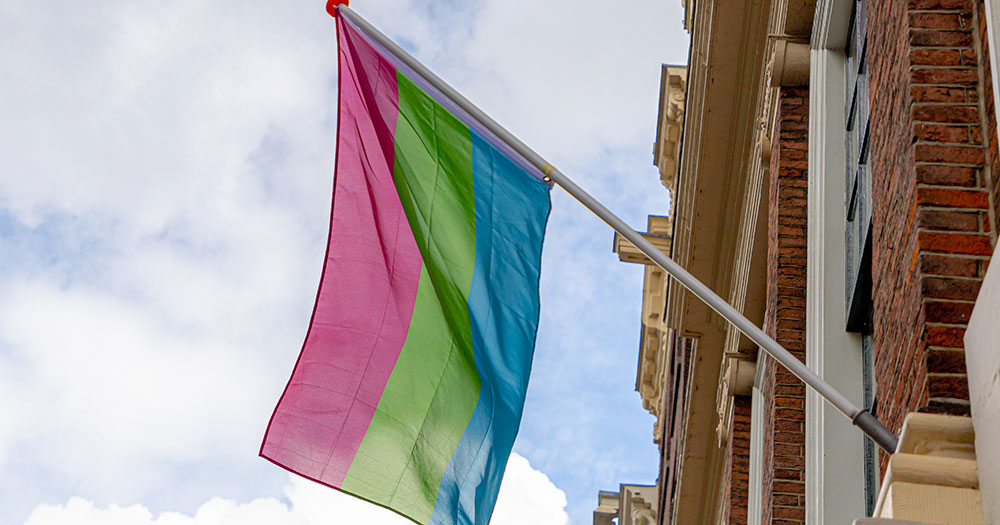For many, the journey to finding themselves can be incredibly difficult. We’re constantly inventing and reinventing new hobbies, relationships, and styles. Personally, it seems I’m always ‘finding’ my way back to my ‘friend-disapproved’ ex or swapping style for sweatpants – but that’s neither here nor there.
However, along with those things, it’s also common to be struggling in some way with labelling my sexuality. Having accessible labels like polysexuality can be helpful for navigating the confusing journey of self-discovery when it comes to sexuality.
What is Polysexuality?
A polysexual individual is someone who may be attracted to multiple, but not necessarily all, genders. Oftentimes used as an umbrella term, polysexuality can include bisexuality (attraction to two or more genders), omnisexuality (attraction to all genders), and pansexuality (attraction regardless of gender).
Pioneered by a Tumblr user in 2012, the polysexual flag consists of three colours: pink, green, and blue. The pink colour represents an attraction to those who identify as women, the green is an attraction to genderqueer/gender non-binary/gender non-conforming people, and the blue is an attraction to those identifying as male.
Polysexuality and Inclusivity
Be open-minded about people’s unique identities. People can interpret their identities in different ways, as they have the freedom to choose labels and communities that feel right for them – without explanation. Never make assumptions about people’s identities based on their pronouns, expression, or partners.
"hey what if i just wanna stick with the bisexual label whether or not i fit the description of these sexualities under the bisexual umbrella?"
go ahead! the distinction is important to some people, while not rlly important to others. you do you dude!
— wil (@praxieserver) July 3, 2022
Most importantly, always promote spaces that allow people to safely express themselves as they choose. For many people in the polysexual community, they finally have the space to navigate their sexual identity and orientation openly. With an unfair history of bi-erasure and harmful bisexual stereotypes, it’s important to recognise it may be difficult for others to feel understood in this space.
Overcoming stereotypes as a polysexual person
Oftentimes, it can feel impossible to navigate trying to understand your own identity while addressing outside perspectives (and criticism) of it.
Stereotypes that polysexual people cheat on partners, express themselves a certain way, or are just using the label as a “placeholder” are ignorant and representative of a heteronormative disregard for queer identity. Even in the midst of the myths about polysexuality, the community flourishes with an encompassing love for many different labels, individuals, and expressions.
Whatever way you choose to label, express, or embody your sexuality is completely valid and uniquely yours to decide. If you feel you need support at any point in your journey, please reach out to any of the resources listed below.
© 2022 GCN (Gay Community News). All rights reserved.
Support GCN
GCN is a free, vital resource for Ireland’s LGBTQ+ community since 1988.
GCN is a trading name of National LGBT Federation CLG, a registered charity - Charity Number: 20034580.
GCN relies on the generous support of the community and allies to sustain the crucial work that we do. Producing GCN is costly, and, in an industry which has been hugely impacted by rising costs, we need your support to help sustain and grow this vital resource.
Supporting GCN for as little as €1.99 per month will help us continue our work as Ireland’s free, independent LGBTQ+ media.
